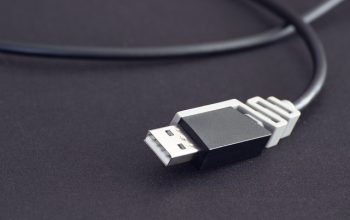Navigating the vehicle title transfer process can be a straightforward task with the right guidance. Whether you’re acquiring a new ride or transitioning ownership of your current vehicle, understanding DMV title transfer requirements is crucial for a seamless transaction. This article outlines the key steps in transferring a car title, including how to transfer a car title post-purchase, the necessary documentation, completing forms accurately, and understanding the associated title transfer fees and costs. With our detailed guide on the vehicle title transfer process, you’ll be well-equipped to finalize the transfer without unnecessary delays or complications.
- Understanding the Vehicle Title Transfer Process
- Gathering Necessary Documentation for DMV Title Transfer
- Completing the Title Transfer Forms Correctly
- Submitting and Processing Your Title Transfer Application
- Paying Title Transfer Fees and Costs
- Finalizing the Transfer: What to Expect After Sending in Your Application
Understanding the Vehicle Title Transfer Process

When transferring a vehicle title, whether it’s a new or used car purchase, understanding the process is paramount to ensure a seamless transition of ownership. The vehicle title transfer process begins with completing the necessary DMV title transfer forms specific to your state. These forms serve as a legal document to formally change the registered owner of the vehicle. It’s crucial to obtain these forms from your local Department of Motor Vehicles (DMV) or their equivalent in your jurisdiction. Alongside the paperwork, you must provide documentation that includes proof of the vehicle’s current title, your valid driver’s license, and any required identification. Additionally, you will need to submit the odometer disclosure statement if it’s a used car.
Once the correct forms are filled out and all supporting documents are gathered, you must visit a DMV office in person or use their online services if available, as some states allow for electronic submission of title transfers. At this point, you will also need to pay the applicable title transfer fees and costs, which can vary by state and include taxes, registration fees, and processing charges. These fees are non-negotiable and must be settled at the time of transfer to finalize the process. After submitting your application and making payment, the DMV will conduct a title search to ensure there are no outstanding liens or issues with the current title. Upon successful verification, they will issue a new title in your name, officially completing the vehicle title transfer process. It’s advisable to check your state’s specific requirements for a title transfer after car purchase to ensure all steps are followed correctly and to avoid any delays in the process.
Gathering Necessary Documentation for DMV Title Transfer

To initiate the vehicle title transfer process efficiently, one must first gather all necessary documentation as per DMV title transfer requirements. This typically includes the completed application for title transfer—often referred to by its form number, such as Form REG-157 in California—proof of ownership like the current title or bill of sale, and a valid photo ID. Additionally, you will need to provide proof of insurance and submit the required title transfer fees and costs. The fee structure can vary depending on the state, with some jurisdictions charging different amounts based on the type of vehicle and whether it’s being transferred as a gift or in a sale. It’s crucial to consult the specific DMV title transfer requirements for your state to ensure you have all the correct paperwork. This may also include an odometer disclosure statement if the vehicle is under ten years old, and any applicable smog certification or inspection results. Ensuring that each document is accurately filled out and accompanied by the appropriate fees will facilitate a swift and hassle-free title transfer after a car purchase. Keeping track of these requirements can seem daunting, but utilizing a DMV title transfer checklist can streamline the process, making it easier to navigate the necessary steps for transferring a vehicle title. Whether you’re transferring a title within the same state or from out-of-state, being well-prepared with all required documentation and understanding the associated title transfer fees will ensure a smooth transition of ownership at your local DMV.
Completing the Title Transfer Forms Correctly

Navigating the vehicle title transfer process requires careful attention to detail, particularly when it comes to completing the title transfer forms accurately. The first step in this endeavor is to obtain the correct form from your local Department of Motor Vehicles (DMV) or their equivalent in your state. This form is typically labeled as a ‘Application for Title’ or similar verbiage, depending on your jurisdiction. It is crucial to fill out this application thoroughly and precisely, providing all required information such as the vehicle’s make, model, VIN number, and the details of both the seller and buyer. Ensure that every field applicable to your situation is completed; incomplete or incorrect forms can lead to delays and potential rejection of your title transfer request.
Once the form is correctly filled out, you must submit it alongside any title transfer fees and costs associated with the process. These fees vary by state but generally include a titling fee and registration fee. It’s advisable to check the DMV title transfer requirements for your specific state to understand the exact amounts and acceptable methods of payment. After submitting the completed form and the necessary fee, the DMV will process your application, which may involve a brief inspection of the vehicle. Upon approval, you will receive the new title in your name, completing the title transfer after a car purchase. Remember to keep track of all deadlines and required documentation throughout this process to ensure a smooth and timely transfer of the vehicle title.
Submitting and Processing Your Title Transfer Application

When initiating the vehicle title transfer process, one of the first steps is to complete and submit a DMV title transfer application form. This form typically requires detailed information about both the seller and the buyer, as well as specifics about the vehicle itself. It’s crucial to ensure that all information provided is accurate and complete to avoid any processing delays or complications. The application should be accompanied by the current title and registration, if available, along with any documents that prove liability insurance coverage. After submitting the application, the DMV will process it according to their set protocols. This involves a thorough verification of the information provided, ensuring compliance with state-specific DMV title transfer requirements.
The processing period can vary depending on the jurisdiction and current workload at the DMV. Upon receiving the application, the DMV will assess the required title transfer fees and costs associated with the transaction. These fees are necessary for the administrative processing involved in updating records and issuing the new title. It’s important to note that these costs may differ by state, so it’s advisable to check the exact fee amount beforehand. Once all documents are approved and fees are paid, the DMV will issue a new title in the buyer’s name, indicating the official transfer of ownership. This new title should be promptly received by the buyer, as it serves as legal proof of possession and is essential for future registration renewals and transactions. Ensuring a smooth submission and processing of your title transfer application is key to a hassle-free transition after purchasing a vehicle, whether it’s brand new or used.
Paying Title Transfer Fees and Costs

When transferring a vehicle title, understanding the title transfer fees and costs associated with the process is crucial. The DMV title transfer requirements typically include submitting the necessary forms along with proof of ownership, such as the previous title or a bill of sale. As part of the vehicle title transfer process, applicants must also pay the applicable title transfer fees. These fees can vary by state and may differ for each type of transaction, such as gift transfers, private sales, or purchases from dealerships. It’s important to verify the exact amount with your local Department of Motor Vehicles (DMV) or its equivalent in your state. The fees often cover the cost of processing the transfer, ensuring that the title reflects the new owner accurately and legally. To avoid any delays or complications, it’s advisable to prepare the correct fee along with your application package. Researching the specific title transfer costs for your transaction will help you complete the process smoothly and in compliance with state regulations. Whether you’re transferring a title after a car purchase or preparing to sell your vehicle, understanding the title transfer fees and costs is an essential step in the DMV title transfer requirements. Ensure that you have the exact fee amount by referring to your state’s DMV guidelines or contacting them directly for the most current information.
Finalizing the Transfer: What to Expect After Sending in Your Application

Once you’ve completed and submitted your application for a vehicle title transfer process, there are several steps to finalize the transfer. Typically, after sending in your application, which includes the necessary forms such as the DMV title transfer forms, along with the relevant documents and fee payment for title transfer fees and costs, you should expect a processing period. During this time, the state’s Department of Motor Vehicles (DMV) will verify the information provided and ensure that all DMV title transfer requirements are met. It is imperative to provide accurate and complete information to avoid delays or return of your application for additional information.
Upon successful validation of your documents and compliance with the title transfer after car purchase regulations, the DMV will process your request. You will then receive a notification from the DMV indicating that your title transfer is complete. This notification may be via mail or an online account if available. It’s crucial to wait for this confirmation before believing the transfer is complete, as attempting to register the vehicle or sell it without a proper title in your name could lead to legal complications. After receiving the confirmation, you can then proceed with registration in your name and have the official title document mailed to you or pick it up from a local DMV office, depending on the state’s protocol. Always ensure that you are aware of the specific Title transfer fees and costs associated with your state to avoid any surprises.
Navigating the vehicle title transfer process can be straightforward with the right guidance. By adhering to the DMV title transfer requirements outlined in this article, from understanding the process to completing all necessary paperwork, individuals can effectively transfer a car title, whether it’s a new or used vehicle purchase within the state or an out-of-state title transfer. Remember that each step, from gathering documentation to submitting your application and paying the required title transfer fees and costs, is critical to finalizing the transfer successfully. Ensure you follow these steps diligently to avoid delays and complications. For a hassle-free experience, utilize the provided DMV title transfer checklist as a comprehensive guide throughout this procedure. With careful attention to detail and compliance with local regulations, your vehicle title transfer after car purchase will be completed efficiently, allowing you to legally operate your new vehicle without issues.



